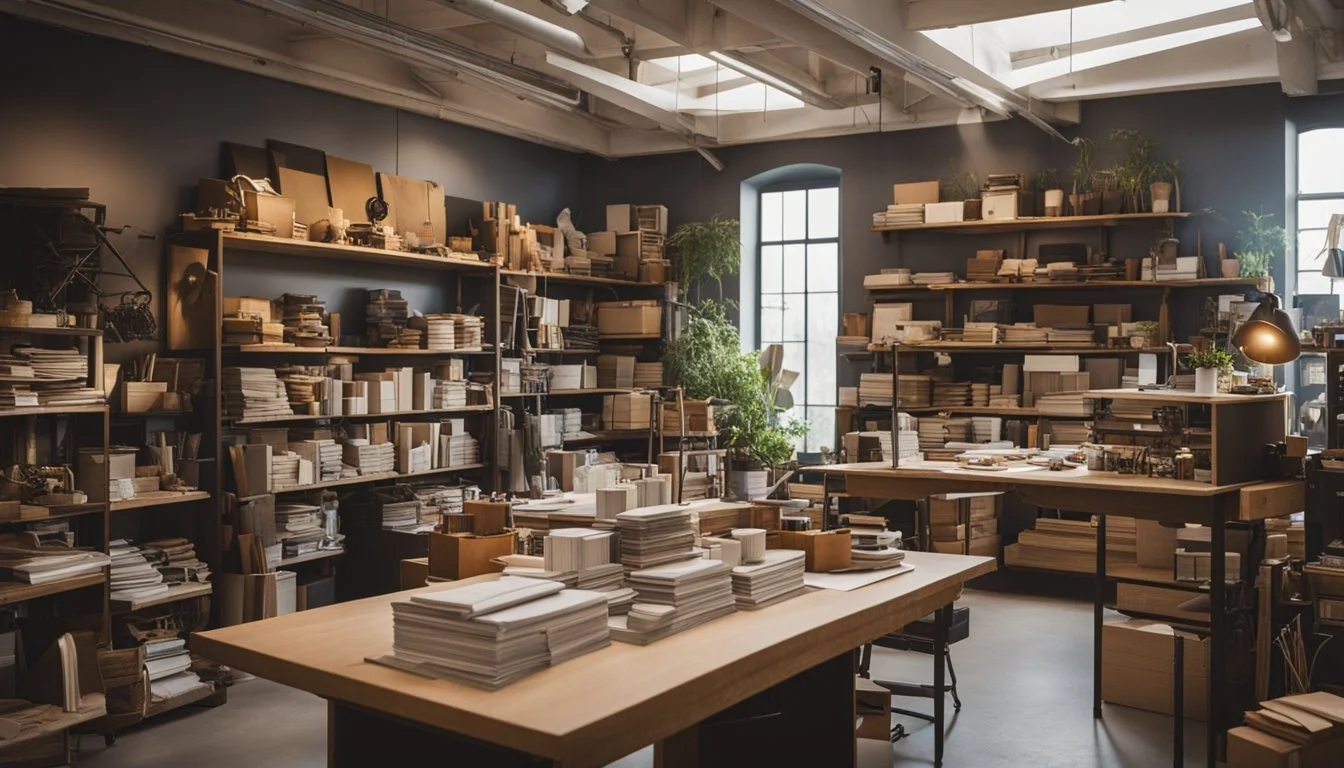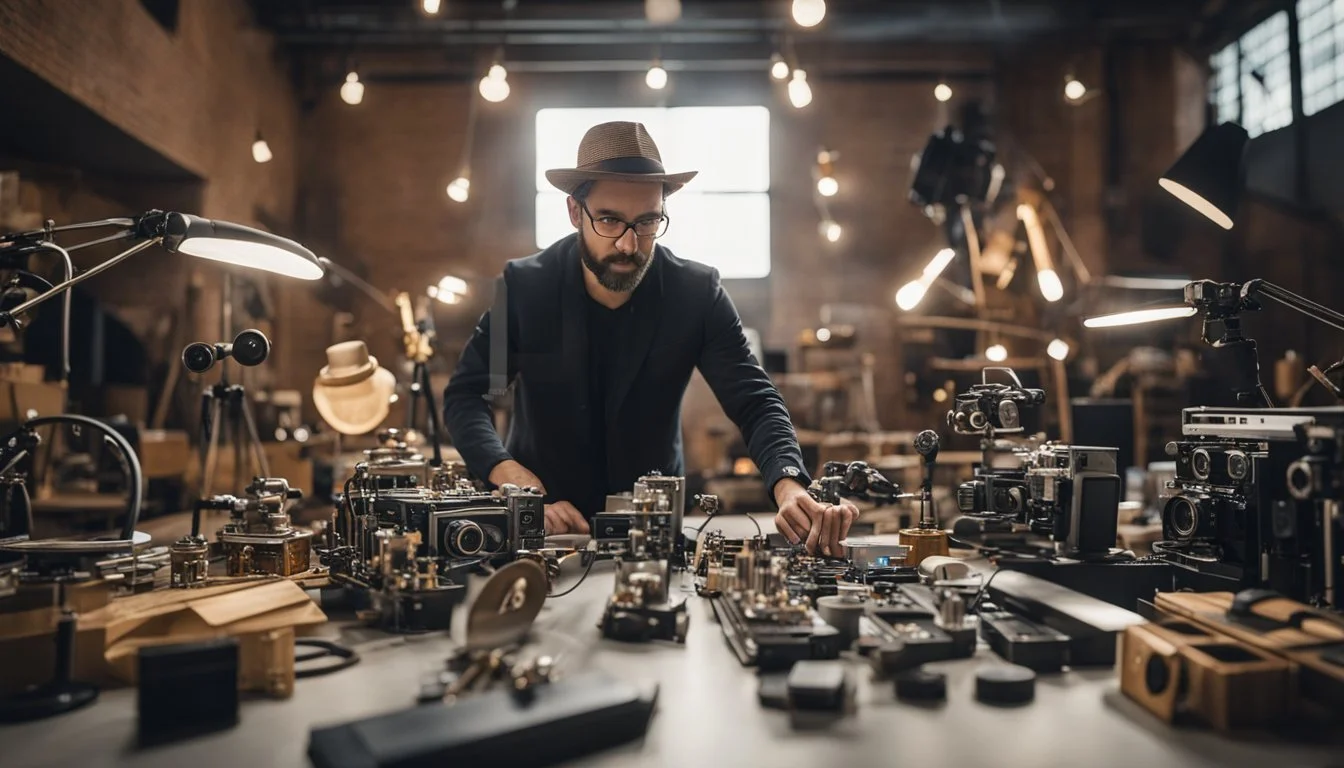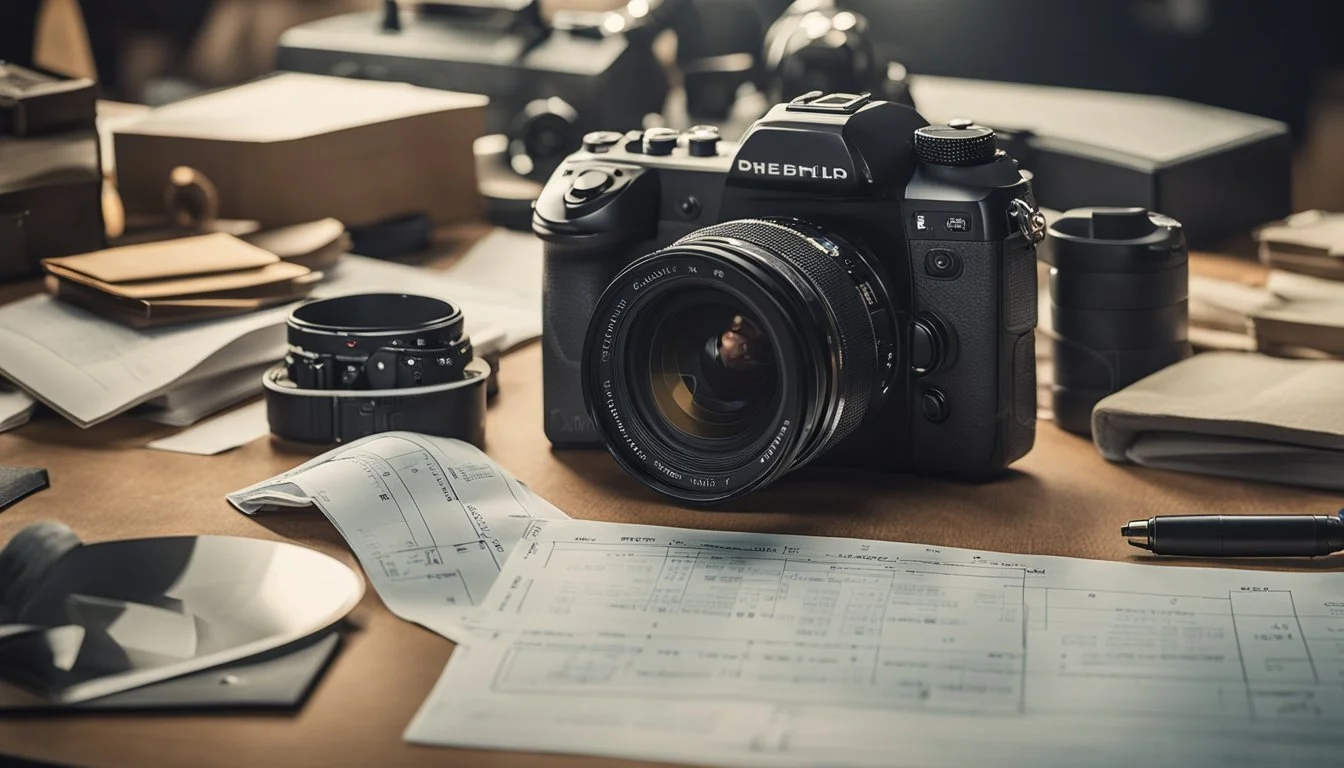The Role of the Production Designer
Crafting Cinematic Realities
In the realm of filmmaking, the production designer stands as a pivotal figure, crafting the visual essence that brings a story to life. This role involves creating immersive environments that enhance the narrative and tone of a film. By designing sets, selecting props, and curating the look and feel of scenes, the production designer ensures that the audience is transported into the film's universe.
A skilled production designer works closely with directors, cinematographers, and other key crew members to translate the script's vision into compelling visuals. Through meticulous attention to detail, they build worlds where actors can fully embody their characters, thus elevating the storytelling experience. The effectiveness of a production designer's work can often determine the overall impact and emotional depth of a film.
Film enthusiasts and aspiring filmmakers alike will find insight and inspiration in understanding how production designers contribute to the magic of cinema. Their creative vision and artistic expertise are fundamental in shaping the worlds that captivate viewers and make cinematic stories unforgettable.
Defining the Production Designer's Role
A production designer shapes the visual atmosphere of a film. They work closely with the director to establish the film's look and feel. This collaboration begins early, often in the pre-production phase.
Their primary responsibilities include creating and managing sets, locations, graphics, props, lighting, and costumes. They ensure these elements align with the story's requirements.
Key Responsibilities:
Conceptual Development: Collaborating with directors and other key crew members to define the visual style.
Set Design and Construction: Overseeing the creation and setup of physical sets.
Prop Coordination: Selecting and managing all props used in the film.
Collaborations:
They work with:
Directors: To ensure the visual style aligns with the narrative.
Cinematographers: To plan camera angles and lighting that enhance the film’s aesthetics.
Costume Designers: To ensure costumes fit the overall visual concept.
A production designer must be a skilled leader, managing the entire art department. This includes art directors, set dressers, and propmasters.
Their work requires numerous meetings, approvals, and revisions. This iterative process is crucial to refine the visual elements until they support the film's storytelling effectively.
Skills Required:
Artistic vision
Attention to detail
Collaboration
Production designers transform scripts into tangible, immersive worlds. Their contributions are vital in making the story visually compelling.
History and Evolution of Production Design
The concept of production design in film emerged in the early 20th century, evolving alongside advancements in cinema technology and storytelling techniques.
In silent films, sets were often simple, emphasizing basic props and backdrops. Designers needed to convey narratives visually, as dialogue couldn't be used.
With the advent of sound in the late 1920s, production design expanded. More intricate sets, detailed props, and crafted environments began to play a crucial role.
1930s-1940s: The Golden Age of Hollywood saw significant advancements. Iconic movies such as Gone with the Wind showcased elaborate set designs that enhanced storytelling and visual appeal.
1950s-1960s: The introduction of color film revolutionized production design. Designers utilized bold colors and innovative techniques to create vivid, immersive worlds, as seen in movies like The Wizard of Oz and Lawrence of Arabia.
1970s-1980s: With blockbusters like Star Wars and Blade Runner, the emphasis shifted towards creating futuristic and fantastical environments. Technological advancements, including CGI, began to influence design practices.
1990s-Present: Modern production design integrates physical sets with digital effects. Iconic films such as The Lord of the Rings trilogy demonstrate a seamless blend of real-world sets and digital landscapes, offering unparalleled immersion.
Table: Key Milestones in Production Design
Era Significant Developments Early 20th C. Basic sets, visual storytelling elements 1930s-1940s Elaborate sets in the Golden Age of Hollywood 1950s-1960s Use of color film, bold designs 1970s-1980s Sci-fi influence, beginning of CGI use 1990s-Present Integration of physical and digital design
Production design has continually evolved, adapting to technological advances and changing cinematic trends, enhancing the narrative depth and visual impact of films through the decades.
Pre-Production Process
The pre-production process is essential in laying the groundwork for the successful creation of immersive worlds in film. It involves detailed planning and collaboration among key team members to ensure a unified vision.
Script Analysis and Conceptualization
The production designer starts by thoroughly analyzing the script to understand the narrative, themes, and visual requirements. This involves identifying the key settings, scenes, and props that are crucial to the story. By breaking down each scene, the designer determines the practical needs of the production. This analysis sets the stage for designing an environment that supports storytelling, ensuring every element aligns with the director's vision.
Collaborating with Directors and Cinematographers
Collaboration with the director and cinematographer is critical. The production designer meets with them to discuss the script, themes, and visual style. These conversations help in aligning everyone's vision for the film. It ensures that lighting, camera angles, and set designs work cohesively. Regular meetings and brainstorming sessions facilitate this alignment, making sure that every detail on set complements the overall narrative and aesthetic.
Research and Visual Inspiration
Research is another crucial element. The production designer gathers reference materials, including photographs, paintings, architectural designs, and historical texts, to draw visual inspiration. This step helps in creating authentic and believable environments. Extensive research informs the color palette, textures, and materials to be used, as well as ensuring cultural and period accuracy. This groundwork enables the designer to construct a visually compelling world that resonates authentically with the audience.
Design Sketches and Storyboards
Design sketches and storyboards translate ideas into tangible visuals. The production designer creates detailed sketches and storyboards that outline the set designs, props, and overall look of the film. These visual tools serve as a blueprint for the construction crew and other departments. They provide a clear visual representation of the envisioned world, helping to streamline the production process. Precision in these sketches ensures that everyone involved has a clear understanding and reference point, promoting effective execution of the design elements.
Design Implementation
The role of the production designer encompasses crafting the film's visual style, directing set construction and prop selection, scouting and adapting locations, and overseeing the art department.
Creating the Visual Style
A production designer collaborates closely with the director and cinematographer to establish the film’s visual aesthetic.
They begin with a thorough analysis of the script, identifying themes, moods, and key visual elements.
Mood boards, sketches, and digital models are often used to convey preliminary ideas.
To achieve cohesiveness, they consider factors like color palettes, textures, and architectural styles, ensuring that each element aligns with the film’s narrative.
Set Construction and Prop Selection
Once the visual style is defined, attention turns to set construction and prop selection.
The production designer works with set builders, prop masters, and decorators to bring the vision to life.
They select materials, oversee the construction of detailed sets, and ensure props enhance the realism and context of the scenes.
This stage involves meticulous planning and coordination to maintain continuity and authenticity.
Location Scouting and Adaptation
Location scouting is crucial for bringing the script's settings to life.
Production designers evaluate locations based on their visual potential, logistical feasibility, and how well they fit the established aesthetic.
They often work with a location manager and adapt existing locations with set extensions or modifications to match the required look and feel.
Attention to detail in transforming spaces is essential to immerse the audience in the film’s world.
Overseeing the Art Department
The art department, managed by the production designer, includes various teams such as set designers, model makers, and costume designers.
Effective communication and leadership are vital to ensure that each team aligns with the overall vision.
The production designer reviews designs, guides creative decisions, and solves any issues that arise during production.
Their leadership ensures a cohesive and visually striking film environment.
Post-Production Contributions
Post-production significantly enhances the film's visual storytelling through intricate processes and specialized roles. One key area explored is the integration of visual effects, which plays a pivotal role in the final realization of the filmmaker's vision.
Visual Effects Integration
Visual effects (VFX) artists work meticulously to create elements that are impossible or impractical to film in real life. By combining digital tools and creative expertise, they craft immersive environments and fantastical elements that blend seamlessly with live-action footage.
VFX enhances the narrative by adding depth and dimension, enabling epic scenes, futuristic landscapes, and believable creatures. Collaboration between VFX artists and production designers ensures that the visual coherence and aesthetic vision established during production are maintained. Attention to detail and alignment with the film's thematic and emotional tone are critical for the effectiveness of visual effects in enhancing the overall viewing experience.
Case Studies in Production Design
Production design significantly influences a film's visual narrative and emotional tone, transforming scripts into immersive visual stories. The following case studies illustrate how iconic sets and modern innovations have advanced the craft of production design.
Iconic Film Sets Analysis
"Blade Runner" (1982) showcases one of the most highly regarded examples of production design. The futuristic dystopian landscape crafted by Lawrence G. Paull is rich in detail, blending film noir aesthetics with cyberpunk elements. The use of neon lights, towering structures, and perpetual rain creates a unique atmosphere that deeply influences the film's tone.
In "2001: A Space Odyssey" (1968), production designer Tony Masters and art director Harry Lange created iconic futuristic environments. The meticulously crafted spacecraft interiors, with their sleek and functional design, amplified the film's exploration of human evolution and technology.
"The Grand Budapest Hotel" (2014), designed by Adam Stockhausen, is another stellar example. The intricate set designs reflect the film's whimsical and nostalgic tone. Each room in the hotel embodies a distinct color palette and style, showcasing meticulous attention to detail which enhances story depth.
Modern Innovations in Production Design
Modern production design often leverages advanced technologies and innovative techniques to create immersive worlds. "Avatar" (2009), designed by Rick Carter and Robert Stromberg, employed groundbreaking CGI to construct the lush, alien world of Pandora. This fusion of practical and digital design elements set new standards in the industry.
"Inception" (2010), overseen by Guy Hendrix Dyas, exemplifies the use of practical effects in contemporary design. The rotating hallway used in the fight scene was a significant technical achievement, combining architectural creativity with engineering precision to produce a seamless experience for viewers.
In more recent times, productions like "The Mandalorian" (2019) have popularized the use of virtual sets, specifically StageCraft technology. This innovation merges live-action with high-resolution LED screens displaying CGI environments. Designers can adjust backgrounds in real-time, enhancing scene realism while reducing post-production time.
The ability to create convincing and immersive worlds continues to evolve, demonstrating the critical role of production design in modern filmmaking.
The Future of Production Design
The field of production design is poised for significant advancements, driven by technological innovations and shifts in creative practices.
Virtual Reality (VR) and Augmented Reality (AR)
VR and AR offer new ways for designers to create immersive environments.
These technologies enable interactive and dynamic sets, enhancing viewer engagement.
Production designers can now visualize and modify set designs in real-time.
Green and Sustainable Practices
There is a growing emphasis on eco-friendly materials and sustainable practices.
Designers are increasingly using digital sets to reduce waste and minimize environmental impact.
The industry is adopting renewable resources and recycling set materials.
Advanced Visualization Tools
Tools like 3D modeling and digital sculpting offer precision and creativity.
Advanced software helps designers render intricate details and textures.
These tools streamline the design process and foster innovation.
Collaborative Platforms
Platforms that facilitate collaboration between different departments are essential.
Real-time communication tools enable seamless integration of visual elements.
Designers can work closely with directors and cinematographers from anywhere in the world.
AI is revolutionizing design with automated processes and predictive analytics.
AI tools assist in generating realistic environments and optimizing design elements.
This technology allows production designers to focus on more creative aspects of their work.
Production design is evolving with these advancements, ensuring that future films continue to captivate and inspire audiences.
Working with Budgets and Timelines
A production designer needs to balance creative vision with financial and temporal constraints. This balancing act requires meticulous planning and resource management.
Collaborates with producers to establish budget limits.
Allocates funds to various aspects of design, such as set construction, props, and costumes.
Regularly monitors expenses to prevent overspending.
Example:
Stage Budget Allocation Set Construction $200,000 Props $50,000 Costumes $30,000
Works closely with the director and production team to set achievable deadlines.
Develops a detailed schedule for each phase, from initial concepts to final dressings.
Ensures designs are completed on time to keep production on track.
Example:
Task Deadline Initial Designs August 1, 2024 Set Construction September 15, 2024 Final Dressings October 10, 2024
Coordination:
Holds regular meetings with the art department and other key personnel.
Provides frequent updates to ensure everyone is aligned.
Makes adjustments to the plan as needed to accommodate changes.
Managing budgets and timelines effectively ensures that the production design supports the creative vision without causing financial or scheduling overruns. This discipline allows the production designer to bring imaginative and immersive worlds to life within the given constraints.





